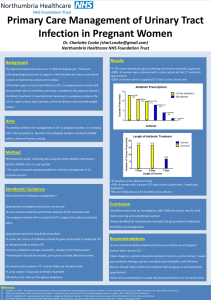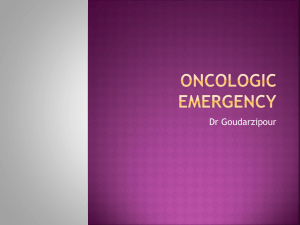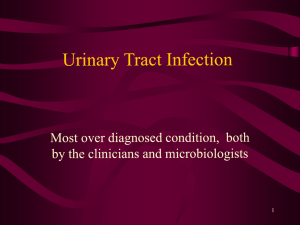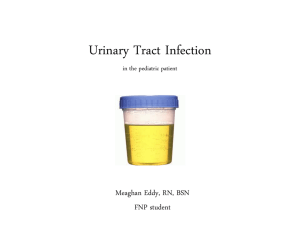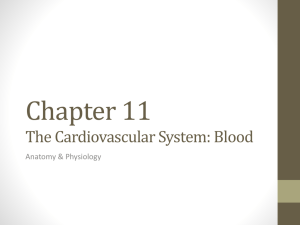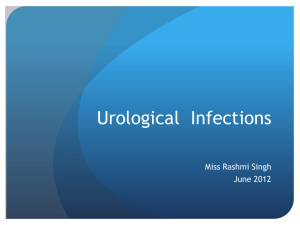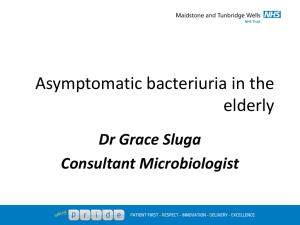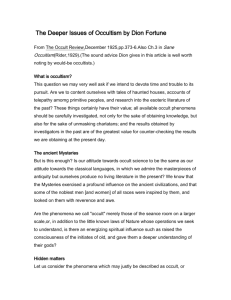Pediatric Fever Protocol
advertisement
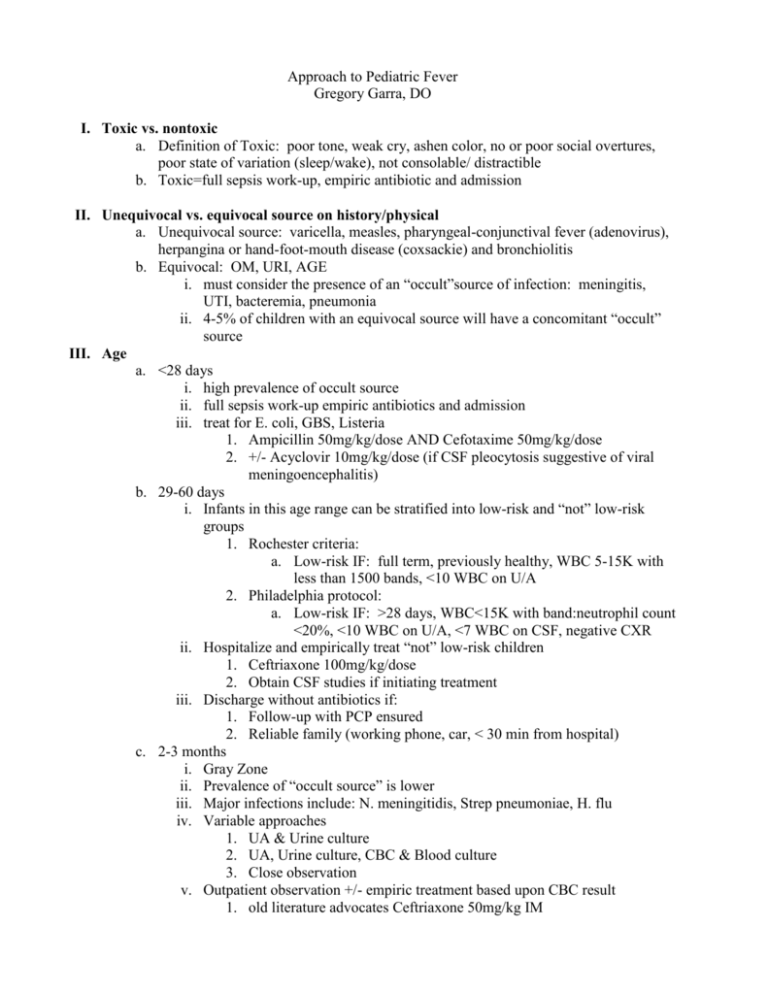
Approach to Pediatric Fever Gregory Garra, DO I. Toxic vs. nontoxic a. Definition of Toxic: poor tone, weak cry, ashen color, no or poor social overtures, poor state of variation (sleep/wake), not consolable/ distractible b. Toxic=full sepsis work-up, empiric antibiotic and admission II. Unequivocal vs. equivocal source on history/physical a. Unequivocal source: varicella, measles, pharyngeal-conjunctival fever (adenovirus), herpangina or hand-foot-mouth disease (coxsackie) and bronchiolitis b. Equivocal: OM, URI, AGE i. must consider the presence of an “occult”source of infection: meningitis, UTI, bacteremia, pneumonia ii. 4-5% of children with an equivocal source will have a concomitant “occult” source III. Age a. <28 days i. high prevalence of occult source ii. full sepsis work-up empiric antibiotics and admission iii. treat for E. coli, GBS, Listeria 1. Ampicillin 50mg/kg/dose AND Cefotaxime 50mg/kg/dose 2. +/- Acyclovir 10mg/kg/dose (if CSF pleocytosis suggestive of viral meningoencephalitis) b. 29-60 days i. Infants in this age range can be stratified into low-risk and “not” low-risk groups 1. Rochester criteria: a. Low-risk IF: full term, previously healthy, WBC 5-15K with less than 1500 bands, <10 WBC on U/A 2. Philadelphia protocol: a. Low-risk IF: >28 days, WBC<15K with band:neutrophil count <20%, <10 WBC on U/A, <7 WBC on CSF, negative CXR ii. Hospitalize and empirically treat “not” low-risk children 1. Ceftriaxone 100mg/kg/dose 2. Obtain CSF studies if initiating treatment iii. Discharge without antibiotics if: 1. Follow-up with PCP ensured 2. Reliable family (working phone, car, < 30 min from hospital) c. 2-3 months i. Gray Zone ii. Prevalence of “occult source” is lower iii. Major infections include: N. meningitidis, Strep pneumoniae, H. flu iv. Variable approaches 1. UA & Urine culture 2. UA, Urine culture, CBC & Blood culture 3. Close observation v. Outpatient observation +/- empiric treatment based upon CBC result 1. old literature advocates Ceftriaxone 50mg/kg IM d. 3 to 36 months: 1. In immunized children (3 doses of PCV-7 and HIB), the prevalence of occult bacteremia is likely between 1.5 to 2% of which 5-20% may go on to develop sequelae 2. Urine is the most likely “occult” source a. Females <24 months b. Uncircumcised males <12 months c. Circumscized males < 6mths 3. Consider CXR if O2 Sats <95%, tachypnea, respiratory distress or rales IV. Special issues a. Otitis media: i. Diagnostic criteria: history of acute onset of symptoms (fever, irritability, excessive crying or pain), presence of middle ear effusion, presence of middle ear inflammation (erythema, opacification, bullae). ii. Pain management is of critical importance in the first 24-36hours, regardless of antibiotic use. iii. Further treatment: Observation vs. antibiotics 1. under 6 mths: treat all 2. 6mths to 2 years: treat is diagnosis is “certain” (all diagnostic criteria met) 3. >2 years: treat if illness is “certain” and “severe” iv. Antibiotics: 1. 1st line: Amoxicillin 80-90 mg/kg per day x 10 days 2. 2nd line: Amoxicillin-clavulanic acid 80-90 mg/kg per day (use 600/42.9mg preparation) 3. PCN allergy: cefuroxime, cefdinir, azithromycin, clarithromycin, sulfamethoxazole-trimethoprim b. UTI i. Urine is the number 1 source ii. Prevalence of UTI in febrile children without a source is 3-7% 1. Highest in girls <2 yrs, uncircumcised males <1 and circumcised male <6mths iii. Estimated that 75% of children <5 yrs with febrile UTI have upper tract disease 1. Renal scarring may occur in 27-64% after pyelo iv. U/A alone for children under 2 years is not adequate for ruling in infection 1. 10-50% of children with culture + UTI have a negative U/A v. Bagged urine specimens have high false positive rate. c. Pneumonia i. Accounts for ~7% of children <2 yrs with fever ii. The presence of any clinical findings of lower respiratory tract infection significantly increases the likelihood of pneumonia iii. The lack of all clinical signs or symptoms of lower respiratory tract infection obviates the need for a chest X-ray iv. Evidence supports ordering of CXR in children <3mths with at least one clinical sign of pulmonary disease

